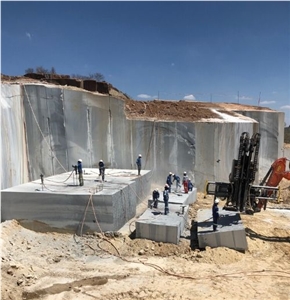Revealing Granite Quarries in South Africa Heritage: A Journey With Quarries
Revealing Granite Quarries in South Africa Heritage: A Journey With Quarries
Blog Article
Uncovering the Rich Background and Lasting Practices of Granite Quarrying
As we stand on the precipice of revealing the detailed tapestry of granite quarrying, a trip via time exposes not simply the physical act of removing rock but additionally the social and historic relevance woven into the really textile of this technique. From the ancient beginnings that laid the structure for modern-day quarrying strategies to the sustainable techniques that are shaping the future of this market, each sculpt mark on granite surface areas informs a tale waiting to be unearthed (granite quarries in south africa). The tradition of granite quarrying stretches far beyond simple extraction; it is a testament to human resourcefulness, durability, and the enduring appeal of this impressive stone
Ancient Beginnings of Granite Quarrying
Dating back to old human beings, the method of quarrying granite has been an essential part of human background and architectural improvement. The earliest evidence of granite quarrying days back to old Egypt, where enormous pyramids and intricate sculptures were crafted from this durable rock. The Egyptians used primitive tools to draw out granite blocks from quarries, showcasing the significance of this product in their monumental buildings.
Progressing in history, the Greeks also made considerable contributions to the quarrying of granite. The Greeks made use of granite in numerous building wonders, such as temples and statuaries, demonstrating their ability in shaping and carving this durable rock. The Romans even more improved the methods of quarrying granite, employing innovative tools like blades and hammers to extract and form granite for their legendary frameworks.
Via the centuries, the method of quarrying granite has actually evolved, with contemporary innovations enhancing efficiency while preserving the classic allure of this natural stone - granite quarries in south africa. From ancient civilizations to modern contractors, the heritage of granite quarrying remains to shape our world
Development of Quarrying Strategies
The evolution of quarrying techniques has been marked by a continuous development towards higher effectiveness and precision in drawing out granite. From the simple techniques utilized by our forefathers to the sophisticated innovations used in modern-day quarrying procedures, the sector has undergone considerable innovations. Early quarrying methods involved manual work with fundamental tools such as blades, hammers, and wedges to draw out granite blocks from the earth. As civilizations progressed, methods like fire-setting and primitive nitroglycerins were presented to promote the extraction process.
In even more current times, the development of equipment revolutionized the quarrying sector, making it possible for faster removal prices and increased efficiency. Technologies such as ruby cable saws, high-pressure water jets, and pneumatic drills have actually become standard in modern-day quarries, permitting for precise cutting and lowered waste. Improvements in computer-controlled devices and 3D modeling have optimized quarrying procedures, leading to minimal ecological impact and enhanced sustainability practices. As the demand for granite proceeds to rise, the advancement of quarrying methods continues to be integral to conference market requires successfully and sustainably.
Social Relevance of Granite
Granite holds an extensive cultural importance throughout various worlds because of its long-lasting existence in building masterpieces and respected monuments. From the stunning pyramids of Egypt to the detailed carvings of the Angkor Wat holy place in Cambodia, granite has actually been a product of selection for sharing splendour and long life in social heritage. In old Rome, granite columns embellished holy places and public buildings, signifying toughness and durability. The cultural value of granite extends beyond its physical characteristics; it symbolizes resilience, security, and timelessness, making it a sign of withstanding heritages and customs.

Sustainable Practices in Quarrying
Amidst the abundant background of granite quarrying and its cultural significance lies an expanding emphasis on sustainable methods within the industry. As environmental recognition and worries about resource deficiency have increased worldwide, find out here now the quarrying sector has actually significantly embraced sustainable methods to lessen its impact on the setting and bordering neighborhoods.

Additionally, recovery and recovery of quarry sites post-extraction are essential to sustainable methods. By recovering quarried areas to a natural or beneficial state, such as developing wildlife environments or leisure spaces, quarriers can offset the ecological footprint of their procedures and add positively to the local environment.
Heritage of Granite Quarrying
With a historical backdrop soaked in workmanship and industrial progress, what withstanding impact has granite quarrying left on the landscape of modern culture? The legacy of granite quarrying transcends plain removal methods; it has actually shaped building wonders, city landscapes, and cultural heritage worldwide. The durable nature of granite has actually made it a preferred selection for monoliths, buildings, and facilities, standing as a testimony to the skill and artistry of quarry workers throughout generations.
Moreover, the financial impact of granite quarrying can not be overlooked. The industry remains to offer employment possibilities and drive local economic climates in regions where granite removal prevails. It has likewise spurred technological advancements in quarrying strategies and tools, leading to extra effective and lasting techniques.
In regards to sustainability, the heritage of granite quarrying consists of efforts to alleviate ecological impacts via reclamation projects and accountable Our site source monitoring. By balancing economic interests with environmental stewardship, the market makes every effort to make certain that future generations can remain to take advantage of this enduring all-natural source.
Verdict

Report this page